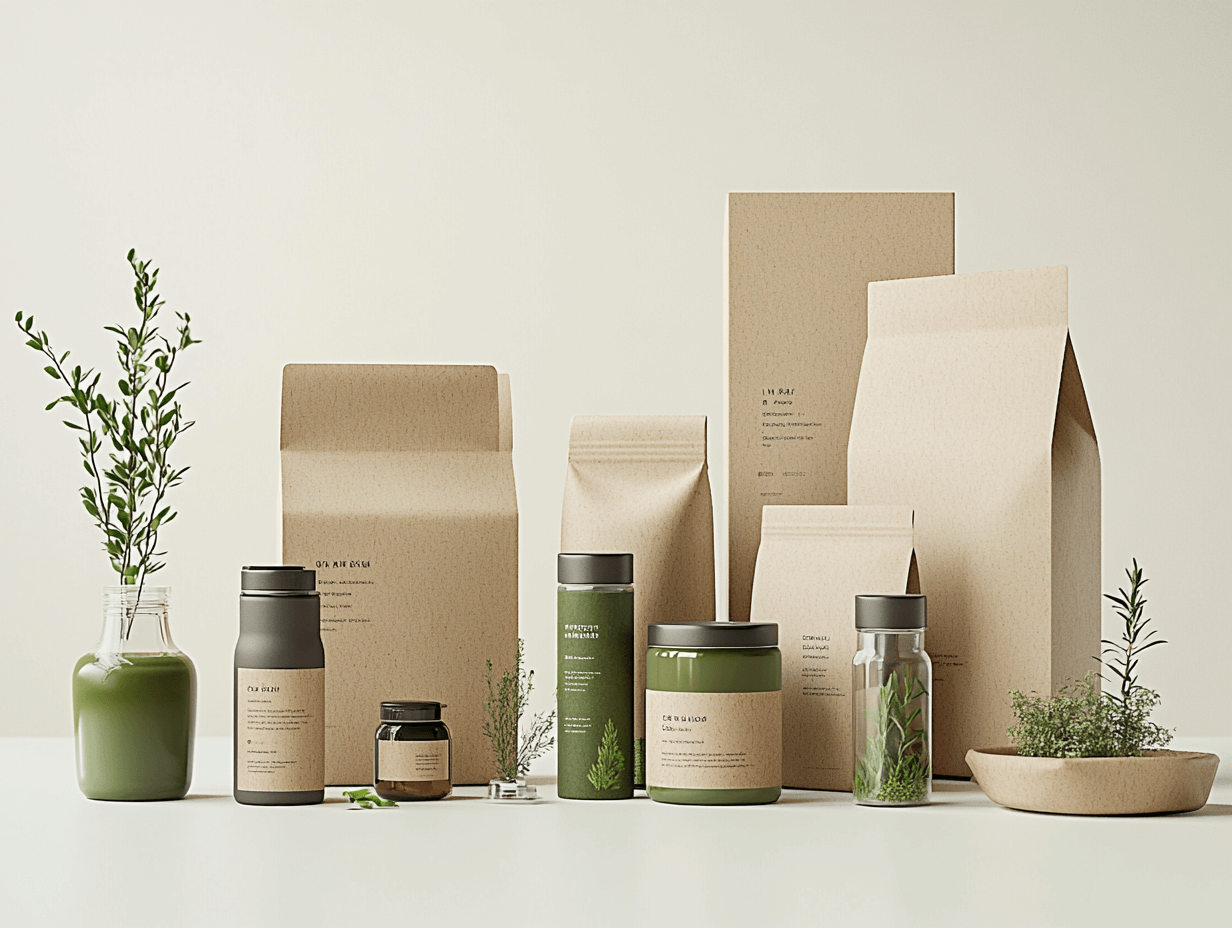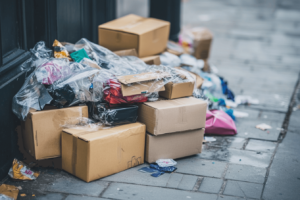The growing demand for sustainable packaging
The rise of eco-conscious consumerism has significantly impacted industries worldwide, particularly in the field of packaging. As the effects of climate change become more evident, consumers are increasingly aware of the environmental consequences of their purchasing choices. This has led to a growing demand for products packaged in a more sustainable and recyclable manner.
Consumer awareness and environmental impact
Over the past decade, there has been a substantial increase in environmental awareness among consumers. Issues such as plastic pollution in oceans, deforestation, and excessive waste accumulation have prompted many to reassess their consumption patterns. As a result, consumers are actively seeking out products that come with packaging that reduces harm to the planet. This awareness has made sustainable packaging not just a trend but an expectation for brands across various sectors.
The shift towards eco-conscious brands
The demand for eco-friendly packaging has driven a major shift in the way companies approach their product packaging. Many brands now prioritize sustainability as a core value, integrating it into their business models and supply chains. This shift is not only in response to consumer demand but also a proactive measure to align with regulations and industry standards that encourage environmental responsibility. Brands that embrace eco-conscious packaging often build stronger relationships with their customers, who appreciate the effort to reduce environmental impact.
Types of sustainable packaging materials
The packaging industry has seen the development and adoption of a wide variety of sustainable materials. Companies are no longer limited to traditional packaging methods and are now exploring options that are not only functional but also environmentally friendly.
Biodegradable and compostable options
One of the most popular categories of sustainable packaging is biodegradable and compostable materials. These packaging options break down naturally over time, reducing their environmental impact. For instance, materials like cornstarch-based packaging, mushroom-based packaging, and plant-based polymers are gaining popularity. Unlike traditional plastics, these materials decompose in a landfill or compost pile, turning into nutrient-rich soil without leaving behind harmful residues.
Recycled paper and cardboard
Recycled paper and cardboard remain staples of sustainable packaging due to their relatively low environmental impact compared to virgin paper products. By reusing paper fibers, manufacturers can minimize deforestation and reduce the energy consumption required to produce new paper products. Many brands now use recycled cardboard for their shipping boxes, reducing waste and promoting the recycling cycle. These materials can be easily repurposed and are readily accepted in recycling programs around the world.
Plant-based plastics and alternatives
In response to the growing issue of plastic waste, plant-based plastics, or bioplastics, are being developed as a more sustainable alternative to conventional petroleum-based plastics. Materials such as polylactic acid (PLA), derived from corn starch, offer a biodegradable solution that maintains the functional properties of traditional plastic. These plant-based alternatives are particularly popular in the food packaging sector, as they are designed to be compostable and can break down in industrial composting facilities.
Benefits of recyclable and eco-friendly packaging
Adopting recyclable and eco-friendly packaging offers several significant benefits that extend beyond just environmental impact. Brands that make the switch to sustainable packaging often experience improvements in customer loyalty, operational efficiency, and overall brand perception.
Reducing carbon footprint and waste
Sustainable packaging significantly contributes to reducing the carbon footprint of production processes. By utilizing recycled materials, less energy is needed in manufacturing, and fewer new raw materials are extracted. Additionally, materials that are recyclable or biodegradable reduce the amount of waste that ends up in landfills or pollutes the environment. This can result in lower emissions from transportation, production, and waste disposal, which all contribute to a reduction in the global carbon footprint.
Supporting circular economy practices
The adoption of recyclable and sustainable packaging is a key component of the circular economy, which emphasizes the reuse, repair, and recycling of products and materials. Packaging designed with this principle in mind allows for a closed-loop system where materials are continuously cycled back into production processes. This reduces the reliance on finite resources and minimizes waste, helping to create a more sustainable and self-sufficient economic system.
Enhancing brand image and loyalty
Brands that commit to eco-friendly packaging often experience a boost in customer loyalty. Consumers are more likely to choose brands that align with their personal values, particularly when it comes to sustainability. Companies that embrace responsible packaging practices can differentiate themselves in a crowded market by positioning themselves as leaders in corporate social responsibility. This not only strengthens customer trust but also improves the overall brand image.

Challenges in transitioning to sustainable packaging
Despite the many benefits of sustainable packaging, there are several challenges companies must navigate when making the transition. From cost concerns to supply chain complexities, adopting new packaging materials can require a significant investment of time and resources.
Cost and supply chain obstacles
One of the primary hurdles in adopting eco-friendly packaging is cost. Sustainable materials, especially biodegradable or plant-based plastics, tend to be more expensive to produce than their conventional counterparts. This can lead to higher production costs, which may impact the final price of the product. Additionally, sourcing sustainable materials may require changes in the supply chain, as not all suppliers can provide eco-friendly options at scale.
Maintaining product protection and quality
While sustainable materials offer environmental benefits, they must also meet the same functional standards as traditional packaging. Maintaining product protection, durability, and shelf life can be challenging when switching to new materials. Companies must ensure that their eco-friendly packaging provides the same level of security and performance, particularly in industries like food, cosmetics, and electronics.
Overcoming consumer perception barriers
Another challenge is consumer perception. Some customers may not be fully convinced of the effectiveness of new packaging materials or may be skeptical about their true environmental benefits. Companies must educate their consumers about the importance of sustainable packaging and demonstrate how their packaging practices align with broader environmental goals.
Innovations in eco-conscious packaging
The push for sustainability has spurred significant innovation in the packaging industry, with new technologies and creative solutions emerging to address the environmental challenges associated with traditional packaging.
Smart packaging and eco-friendly technology
One exciting development in sustainable packaging is the integration of smart packaging technology. This includes the use of QR codes, sensors, and digital labels that allow consumers to access more information about the product’s lifecycle and its environmental impact. These technologies not only enhance the consumer experience but also provide valuable data for companies to improve their packaging sustainability over time.
Packaging that promotes reuse and repurposing
Another innovative approach is the creation of packaging that encourages reuse or repurposing. For example, brands are increasingly using containers that can be refilled or repurposed for other uses, reducing the need for single-use packaging. This approach extends the life cycle of the materials and decreases waste.
The role of upcycling in packaging solutions
Upcycling has emerged as a creative solution to reducing packaging waste. Upcycled materials, often sourced from discarded products, can be transformed into functional packaging. This process not only gives new life to materials that would otherwise end up in landfills but also promotes creativity and sustainability in packaging design.
Industry leaders paving the way
Several forward-thinking companies are leading the charge in sustainable packaging. By setting ambitious goals and embracing innovative solutions, these companies are demonstrating the feasibility of large-scale transitions to eco-friendly packaging.
Brands with sustainable packaging initiatives
Major brands across various industries are implementing sustainable packaging initiatives. For instance, companies like Unilever, Nestlé, and Coca-Cola have committed to using recyclable or compostable packaging for a significant percentage of their products. These brands understand the long-term benefits of adopting sustainable packaging and are using their influence to drive industry-wide change.
Collaborations between packaging manufacturers and brands
Collaboration between brands and packaging manufacturers is essential to developing and scaling eco-friendly packaging solutions. Many companies are working together to improve the performance and availability of sustainable materials. These partnerships are critical in creating an ecosystem where sustainable packaging becomes the norm rather than the exception.








